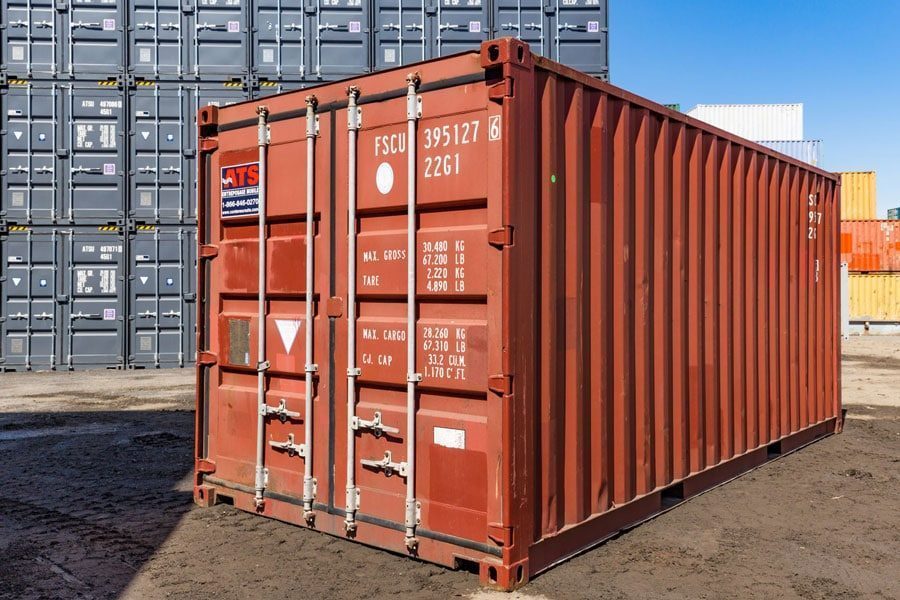Used shipping containers can vary in condition depending on their wear and tear. Some have seen more years of usage than others and some have been exposed to harsher conditions than others. If you are in the market to purchase a used shipping container, we can recommend the following precautions to ensure you end up with cargo worthy used container. As used shipping containers will never be comparable in condition to one trip containers, it is important to have a starting point of what to expect from a used cargo container.
1. One of the first areas of the containers we recommend you inspect is the outside. Walk around the container and take a look at the general condition of the unit. Minor corrosion, small dents and patches are considered normal for used containers that are more than 10 years old. However, if appearance is important given the location you will place the equipment, try to look for a container that has less panel damage.
2. Review the CSC plate on the left container door. This plate is secured to every container by the manufacturer and container the manufacturing information including the production date of the unit. Review the production date and reference it against general condition of the unit. Does it make sense or has it seen excessive wear and tear given its age?
3. Review the corner castings and seams throughout the container. Make sure the seams are not exposed or the welds cracking. If there are any cracks or other weak points, this could pose a serious security and structural integrity concern.
4. Check the doors to ensure they open and close relatively smoothly. Ensure the locking bars can accommodate a padlock if there is no secure lockbox (note – a lockbox is not standard on a used container but an add on). This will ensure the dry, safe storage of your contents and minimize exposure to the elements or theft.
5. Enter the container and inspect the floor. Container floorboards are made of marine grade plywood so over time, their appearance can change and they can retain moisture. Some light damage, once again, is normal but inspect the floor of the container to make sure it is straight, and the wood is not rotted. This will be important to securely holding up the weight of the contents being stored inside. ATS Containers will use a container handler to lift every container received to verify the under structure as part of our standard inspection process.
6. While inside, gently close the doors of the container as much as possible. Being inside the container with the doors closed should help you identify any cracks or pinholes in the walls or roof. If you see light coming in, the container will not be in wind and watertight condition.
7. If the container you are inspecting is non working container (insulated), make sure to inspect where the refrigeration unit once was. Insulated shipping containers were at one point refrigerated containers that have had their refrigeration unit removed. The hole left behind would have been sealed off with either plywood or a piece of aluminum. It is important that the seals are intact and no light is coming through.
8. If the container you are inspecting is a refrigeration unit, it is also critical to test out the temperature controls. Once the unit is hooked up to the electrical source, set the desired temperature required to verify that the refrigeration unit is functional and capable of maintaining the temperature.
9. Next, inspect the roof of the container to ensure it is relatively straight, free of waving or other deformations. This is usually very visible from the ground and does not require accessing the roof.
If you have any concerns, we recommend you buy a shipping container from a reputable source, such as ATS Containers. We’ve specialized in cargo containers for over 30 years and our team of container experts can help you sources a high-quality unit fit for your needs.
